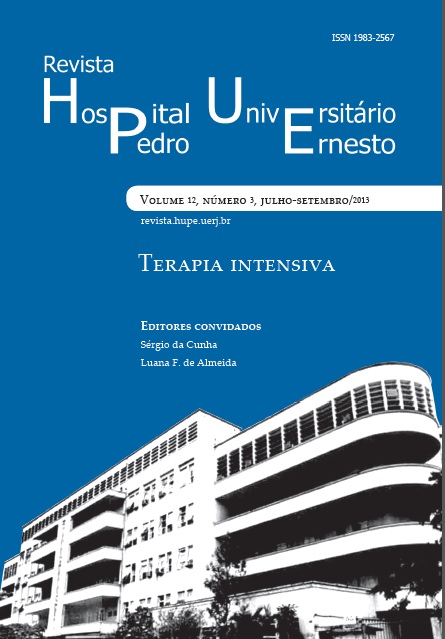Glycemic control in critically ill patients in the ICU
DOI:
https://doi.org/10.12957/rhupe.2013.7530Abstract
The use of strict glycemic control (blood glucose between 80-110 mg/l) in critically ill patients has been the subject of numerous studies with conflicting results. From impressive results observed in Leuven I study, which used a strict control of glycemia with mortality reduction, this type of management has become routine in the ICU. However, with the results of more recent works, there has been a renewed discussion of the subject, aiming to guide intensivists regarding the optimal level of glycemic controlin these patients. It is known that hyperglycemia is deleterious in critically ill patients invarious clinical scenarios encountered in ICU, resulting in worse outcomes. However, hypoglycemia which occurs most commonly when establishing a strict protocol, negatively affects the results when we try to normalize glycemia of critically ill patients. It is a major challenge to maintain acceptable blood glucose values inthis group of patients with major metabolic derangements and in this regard the establishment of a protocol for glycemic control is critical. Studies show that hyperglycemia is associated with immune and endothelial dysfunction as well as alterations in coagulation and fluids and electrolyte disorders. In our unit the goal is to keep blood glucose levels being 140-180mg/dl in patients with systemic inflammatory response. Recent guideline of the Surviving Sepsis Campaign reemphasize de loose glycemic control (less ou equal than 180 mg/gl) in septic patients. Further studies are awaited to determine the optimal blood glucose in these patients, as well as the best means of reaching it, either by the use of computerized algorithms and/or glycemic control by continuous transdermal glucometers reading.Downloads
Published
2013-09-30
Issue
Section
Artigos


